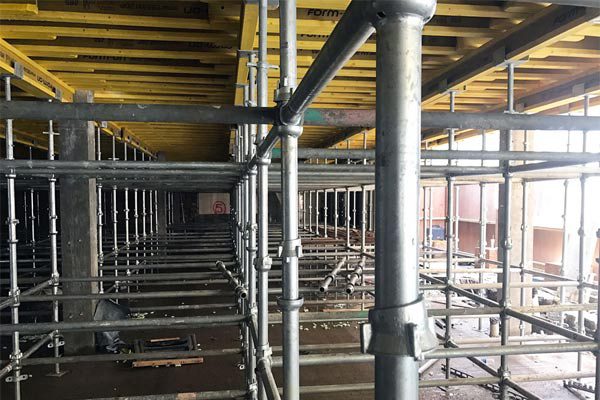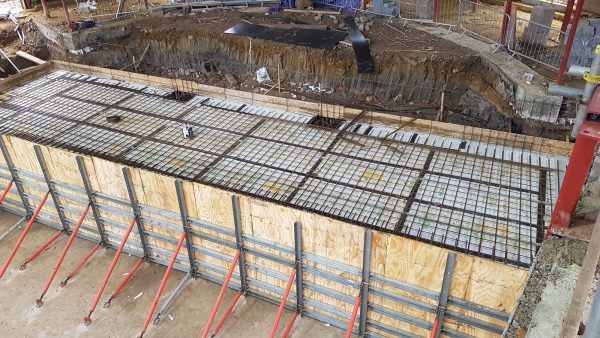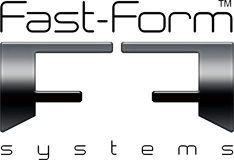Falsework vs Formwork: What’s The Difference?
01.03.2021
Fast-Form Systems manufactures and supplies both falsework systems and formwork and while these two products are often spoken about interchangeably, it’s important to understand that there are significant differences between the two.
In a nutshell it’s pretty easy:
- FALSEWORK: Is typically a temporary horizontal system onto which you cast concrete.
- FORMWORK: Is typically a temporary vertical structure into which you pour concrete.
Both formwork and falsework have been used within the construction industry for Thousands of years – even dating back to the Roman times when building bridges and viaducts. Today, they both still play a major part in building structures – falsework plays a vital role in the temporary support of formwork in the construction of buildings, bridges and much more.
What is falsework?
Falsework is typically used to support a horizontal structure that is still in the process of being built and cannot yet support itself. The falsework systems are used as a temporary measure in order to hold the concrete in place. This is usually in the form of Slabs, so a raised floor basically, think of a multi-storey concrete structure, each floor would have columns cast first, then you fit the falsework which is basically a horizontal forming system, onto which you lay rebar and concrete and after a its poured and set you can ‘Strike’ the falsework from underneath, though often it will need additional ‘Back Propping’ to keep the structure safe until the concrete has fully cured.
Traditionally, timber was used for every part of falsework systems, but this was soon replaced with more sustainable materials – aluminium and wooden H20 beams are popular as are panel and prop based systems, Fast-Form’s offer a wide range of systems.
Why is falsework important?
There are numerous falseworks systems available depending on the height and depth of the slab and finish required. The example below is a Cuplock and H20 beam system, this gives very high strength and a superior finish to a panel system and is very versatile for openings etc. However, for very high and deep slabs an alternative would be a heavy duty aluminium system. We design the best system to suit the job and finish required.

What is formwork?
Formwork is also used to support the casting of RC works in buildings, but in a slightly different way. Formwork is a temporary mold that helps to maintain the shape of concrete until it solidifies. Once the concrete dries and sets, the formwork is then removed. A range of materials can be used for formwork, including timber, steel, aluminium or plastic.
When it comes to choosing the type of formwork for a job, it is important to consider the temperature at which the concrete will be poured, as well as the type of concrete being used and the height, width and length of the wall and the pour rate required.
All of these affect the level of pressure which is exerted, so the right material needs to be used. The formwork sides need to be strong enough to resist the outward pressure of the wet concrete setting. It’s a very common error to not calculate the pressures and many pour failures are down to poor design, at Fast Form we design the system to suit the job, we have never had a pour failure on our designs.
Why is formwork important?
The main benefit of using formwork within a construction project is that it ensures structural safety. Another advantage is that it protects workers too, by ensuring proper access. Just like with falsework systems, formwork can help to reduce the overall cost of the project by reducing the amount of time it takes to carry out the construction. Skilled labourers are also required for a shorter amount of time.
The quality of formwork is extremely important as if this is sub-par, it could seriously affect the safety of the construction workers. Defective concrete is also very expensive to repair, so it is important to make sure the pouring and setting process is carried out properly. This means that any supports for the formwork should also be of a high quality.

Fast-Form’s systems
Not only is the Fast-Form System quick to erect and lightweight, we offer the best finish on the market. It is also the lowest-carbon, greenest type of formwork on the market and we even supply a Carbon Saving Certificate for each job to show how much carbon has been saved. With a 25+ year lifespan, Fast-Form’s systems are designed to last, and reduce the use of timber for a much more sustainable solution.
Fast form is unique in it can be fitted by hand or like other systems lifting in panels but unlike other systems, it can also cast a straight or Radius wall with the same component parts.
If you would like to find out more about Fast-Form falsework or wall / column formwork, please contact us today and our team will be happy to assist.



